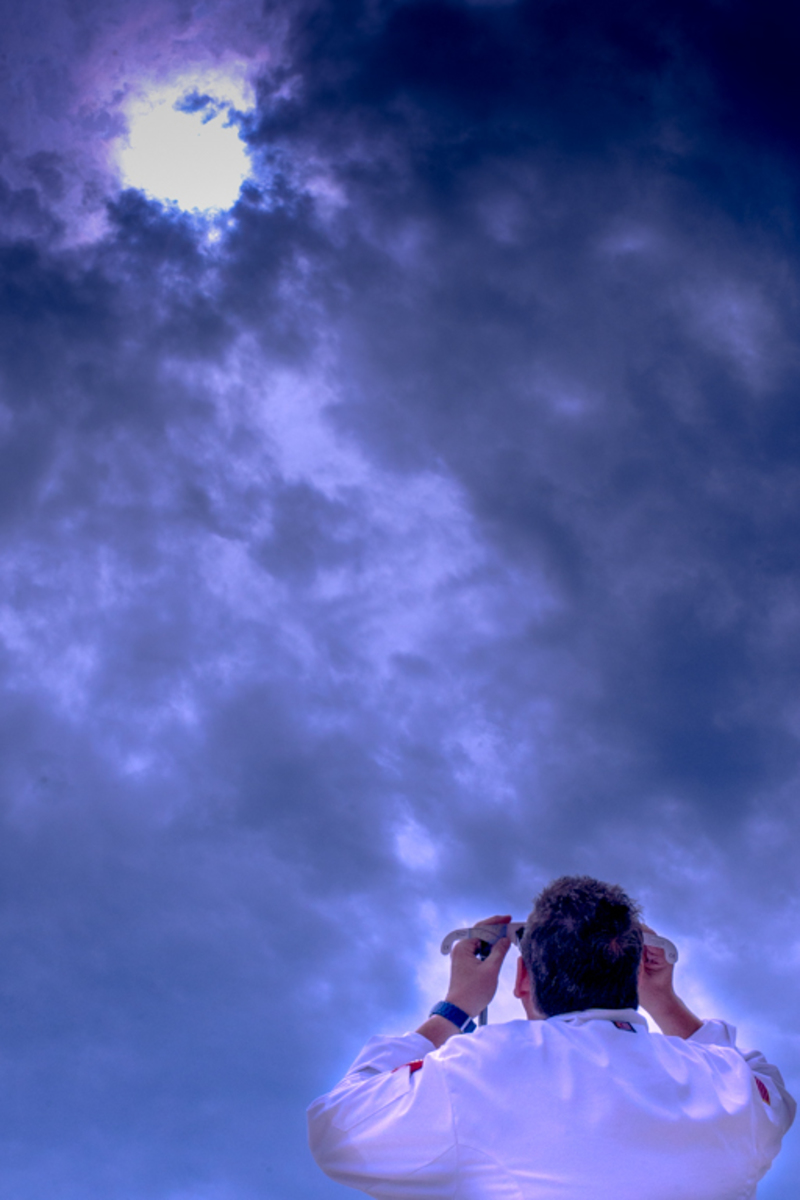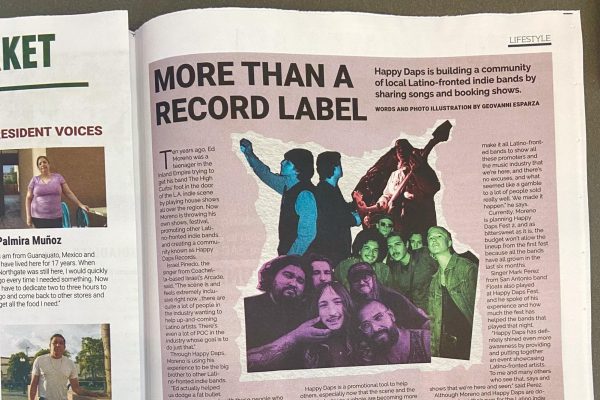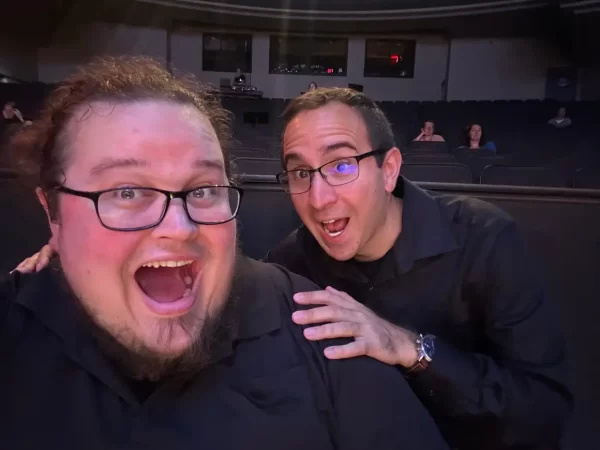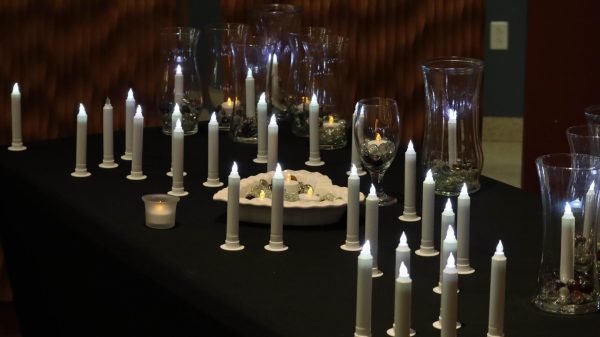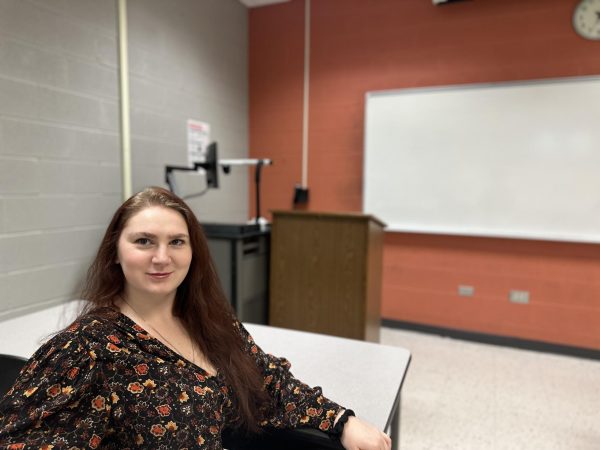ECC witnesses the 2017 Solar Eclipse
Chef Patrick Stewart, winner of ECC’s Orrin Thompson Award for Teaching Excellence, takes time during class break to safely view the partial solar eclipse through the clouds. The solar eclipse took place on Aug. 21, the first day of classes for the fall semester.
September 15, 2017
On Aug. 21, the United States of America was fortunate enough to have the best possible viewing for a solar eclipse. Some individuals drove hours upon hours to reach the inside of a 70-mile radius band, allowing them to witness the whole spectacle in complete totality. Others just had to set up a chair in their backyard and watch. Whoever was fortunate enough to be inside the radius experienced a much more substantial and fascinating viewing. So what exactly makes it so unique compared to the normal viewing in Elgin.
A local musician producer and science lover named Jake Lizzio took a trip to Chester, Illinois to witness the complete totality for himself. He parked near a forest preserve where multiple astronomy fanatics were setting up their gear for the most optimal viewing and picture taking.
“I was surprised by how weird everyone and myself felt,” said Lizzio.
For the last five minutes, the crowd watched the unusual visuals with vigilant excitement. The temperature began to drop while the earth was slowly dimming in light. A rare sighting of shadow bands began to appear on the ground, making watchers gasp in disbelief. The shadows looked like an endless amount of transparent snakes consistently moving in all directions.
“I wasn’t prepared to see that angry and flaring image that was about to encompass the sun,” Lizzio said.
The moon had completely covered the sun and began to show a corona, forming beams of light escaping from the dark ominous circle in all directions. The sound of everyone taking off their protective eyewear emitted. Everyone expressed their astonishment as they safely looked at the phenomenon with their own eyes. All of the wildlife accommodated to the lighting changes, offering the night time ambience we are all so familiar with. Someone in the crowd abruptly yelled, “Look, the whole sky is orange!”
Lizzio looked down from the eclipse to see a sunset throughout the entirety of the earth’s lower atmosphere. With everything happening at once, the experience could only be compared to something in a sci-fi film.
“Honestly, I would easily put this as one of my top ten ranking moments in my entire life. It is indelibly burned into my memory.” We then wondered, what makes seeing this event so naturally special? “It’s a coincidence with novelty.” The chances of being able to see a complete solar eclipse is a rarity, with future viewing opportunities usually being an extensive amount of years away. The solar eclipse changes the elements of life we are so used to seeing by giving us an alternate perspective on normalcy. Being in complete totality may inspire you to take a journey past common comforts and search for new lifelong experiences that will be remembered infinitely. Thankfully, everyone in the United States will have a second chance to be transfixed by being able to witness complete totality in seven years from now. There is no better time to plan for the future than at the moment where we are the most aware.
Keep in mind, experiencing the solar eclipse without proper knowledge of health risks can cause a substantial amount of side effects. Whether it be this eclipse or ones in the past, many have taken the risk and stared at the raw eclipse. For this, their body pays a price. If you or someone you know have stared directly at the recent eclipse or even raw sunlight for more than a few seconds, please visit your eye doctor if you haven’t already to ensure there is no damage.
A common detail to forget when staring at an eclipse is that in doing so, that person is also staring directly at raw sunlight. Light directly from the sun sends radioactive light molecules that with overexposure burn into the eyeball tissues. Simply put, the eyeball is sunburned. This case of cause and effect is called solar retinopathy and can happen to both animals and humans. Minor cases may not be obvious, the person may just experience frequent and/or prolonged headaches after the event. In most cases, the eye will heal itself when it is minor, however, if having stared too long one may become partially blind. This is, of course, more obvious but varies in how it appears. Vision may be blurry or have small spots that appear white or blank.
For more information on what exactly solar retinopathy is, please visit eyewiki.aao.org. For information on abstract psychological and physiological side effects that are being debated, read the article “Does the Solar Eclipse impact humans physiologically? Does eclipse anxiety have meaning?” by Kim Mclendon on the Inquisitr website.


